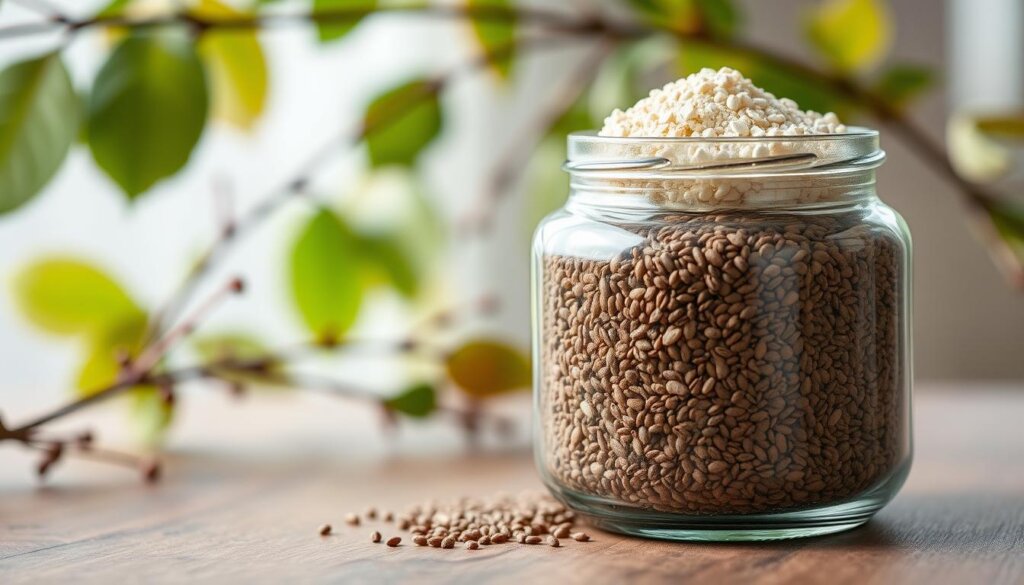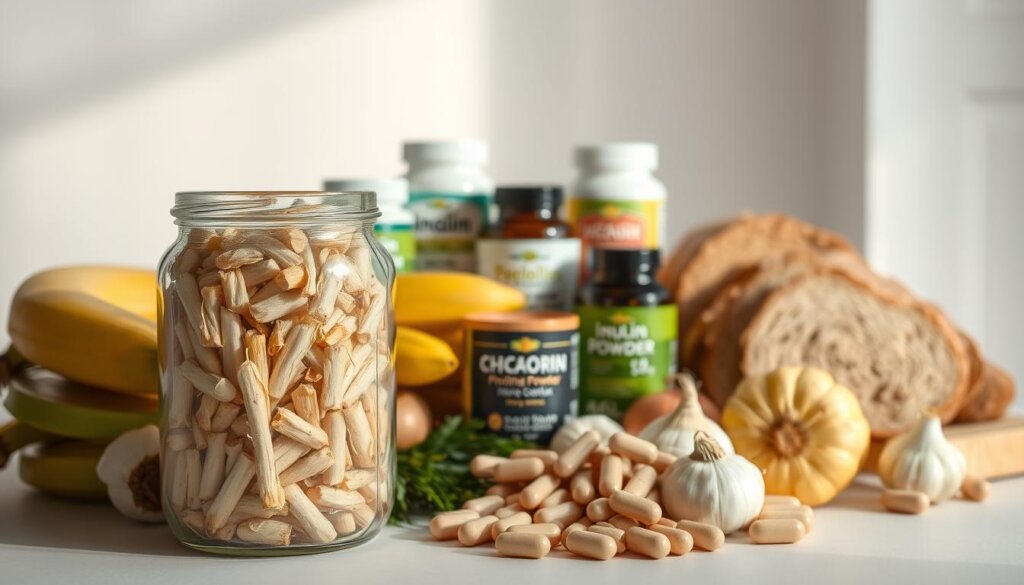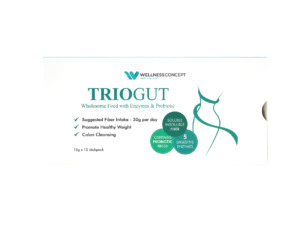1 in 3 adults globally now lives with insulin resistance – a silent metabolic condition that often progresses to type 2 diabetes if unaddressed. This staggering statistic highlights a growing health challenge affecting people of all ages, including Malaysia’s population where diabetes prevalence continues to rise.
The body’s ability to manage blood sugar relies heavily on insulin sensitivity. When cells stop responding effectively to this crucial hormone, glucose builds up in the bloodstream instead of being absorbed. Over time, this imbalance strains the pancreas and increases cardiovascular risks.
Nutritional strategies play a vital role in addressing metabolic concerns. Certain dietary components show promise for supporting healthy glucose processing, with soluble varieties of plant-based nutrients drawing particular scientific interest. These substances form gel-like structures in the gut, slowing carbohydrate absorption and promoting balanced energy release.
The Wellness Group’s research team emphasizes that targeted dietary adjustments work best when combined with lifestyle modifications. “While no single solution exists, strategic nutrition choices can significantly impact metabolic outcomes,” explains their chief nutrition specialist.
Key Takeaways
- Insulin resistance affects over 30% of adults worldwide and often precedes type 2 diabetes
- Dietary fiber influences glucose metabolism through multiple biological mechanisms
- Soluble and insoluble fibers play distinct roles in digestive health
- Supplementation should complement – not replace – whole-food nutrition
- Medical guidance ensures safe integration with existing health protocols
Understanding the Role of Fiber Supplements in Health

Click to 了解更多
Dietary components can significantly influence how our bodies process sugars and hormones. Among these, plant-based nutrients that dissolve in water stand out for their unique properties. These substances form a protective gel during digestion, creating gradual nutrient absorption patterns.
Overview of Fiber Types and Benefits
Water-soluble varieties work like nature’s pacemakers for digestion. When mixed with fluids, they thicken stomach contents and slow glucose release into the bloodstream. This mechanism helps maintain steadier energy levels throughout the day.
Beyond blood sugar management, these nutrients support heart health by binding to cholesterol particles. They also act as prebiotics, feeding beneficial gut bacteria linked to digestive enzyme production. Regular intake may improve bowel regularity and promote healthy weight maintenance.
How Fiber Influences Insulin and Blood Sugar
The viscous gel formed by soluble types delays carbohydrate breakdown. This gives insulin more time to work effectively, preventing sudden glucose surges. Studies show consistent intake correlates with improved hormonal response over 8-12 weeks.
Combining these nutrients with protein-rich meals enhances their stabilizing effects. For those struggling with whole-food sources, concentrated forms offer practical solutions. However, experts emphasize gradual introduction to avoid digestive discomfort.
Are fiber supplements good for insulin resistance?
Emerging research highlights the potential of certain dietary additions in managing metabolic health challenges. A clinical trial involving women with type 2 diabetes demonstrated significant improvements when participants consumed 10 grams of HP inulin daily. Over time, fasting glucose levels dropped by 8.5%, while hemoglobin A1c values decreased by 10.4%.

Different soluble varieties show distinct impacts on glucose regulation. The gel-forming property of specific plant-based nutrients slows carbohydrate breakdown, allowing insulin more time to function effectively. This mechanism helps prevent sudden spikes while supporting hormonal balance.
Consistent intake appears crucial for lasting metabolic benefits. Studies suggest improvements in glycemic control typically emerge after 8-12 weeks of regular use. Combining these nutrients with protein sources enhances their stabilizing effects, according to nutrition researchers.
“Targeted nutritional strategies work best alongside lifestyle adjustments for comprehensive metabolic support,” notes a recent journal review.
While evidence remains promising, individual responses vary based on factors like gut microbiome composition. Medical professionals recommend personalized approaches when incorporating concentrated forms into daily routines. Regular monitoring ensures optimal outcomes while minimizing digestive discomfort.
The Science Behind Fiber and Blood Sugar Control
Delayed nutrient absorption holds the key to maintaining stable energy levels. When specific plant compounds interact with water, they create a natural barrier against rapid carbohydrate breakdown. This process transforms digestion into a gradual, controlled event rather than a metabolic sprint.
Mechanisms of Fiber in Slowing Glucose Release
Soluble plant nutrients act like traffic controllers in your stomach. They form a thick gel that traps carbohydrates, forcing them to move slowly through the digestive highway. This delay gives insulin more time to clear glucose from the bloodstream effectively.
Research reveals this gel reduces enzyme access to starches by 40-60%. Slower carbohydrate breakdown means steadier energy release. The result? Fewer dramatic spikes in blood sugar levels after meals.
Impact of Viscosity on Glycemic Responses
Thicker stomach contents directly influence how the body processes sugars. High-viscosity mixtures take 50% longer to leave the stomach compared to watery solutions. This extended stay allows for better-regulated glucose absorption in the intestines.
“The relationship between viscosity and glycemic control is one of nutrition’s most consistent findings,” states a 2023 Journal of Nutritional Science meta-analysis.
| Fiber Type | Common Sources | Viscosity Impact |
|---|---|---|
| Beta-Glucans | Oats, Barley | Reduces post-meal glucose by 25% |
| Pectin | Apples, Citrus | Slows carb absorption by 3+ hours |
| Psyllium | Plant Husks | Improves glycemic control by 18% |
These physical changes trigger hormonal responses that support metabolic balance. The stomach’s extended retention time prompts gradual insulin release, helping maintain stable blood sugar throughout the day.
The Role of Soluble Fiber in Improving Insulin Sensitivity

Click to 了解更多
Certain plant-based compounds work like invisible allies in your digestive system. These water-friendly nutrients transform during digestion, creating beneficial effects that ripple through your entire body.
Nature's Digestive Traffic Control
Soluble plant compounds act like smart sponges in your stomach. When mixed with water, they form a thick gel that slows down food processing. This natural delay allows insulin to work more effectively, preventing energy crashes after meals.
Your Gut's Secret Factories
Undigested soluble nutrients reach the large intestine where trillions of microbes await. Friendly bacteria feast on these compounds, producing valuable substances called SCFAs. Three key players emerge:
- Butyrate: Supports intestinal cell health
- Acetate: Helps regulate appetite
- Propionate: Influences glucose production
These microbial byproducts activate special sensors in your gut lining. When triggered, they signal the release of hormones that improve insulin function. A 2023 nutrition study found this process can enhance glucose metabolism by up to 22% in some individuals.
“The gut microbiome acts as a metabolic partner, transforming dietary components into powerful regulatory molecules,” notes recent research in Cell Metabolism.
This microbial teamwork creates lasting benefits. Eating soluble-rich foods at breakfast helps maintain balanced blood sugar levels through lunch – a phenomenon scientists call the second-meal effect. For those considering adding these nutrients to their daily routine, gradual introduction helps the gut adjust comfortably.
Emerging evidence suggests maintaining diverse gut bacteria could be as crucial for metabolic health as traditional dietary advice. While individual responses vary, regular soluble nutrient intake appears particularly beneficial for those managing blood sugar concerns.
Integrating Fiber Supplements into a Balanced Diet
Modern eating patterns often leave nutritional gaps that impact metabolic health. While whole foods remain essential, strategic additions can help bridge deficiencies. A combination approach works best for maintaining steady nutrient intake without drastic lifestyle changes.
Smart Pairing for Daily Nutrition
Only 5% of Americans meet daily fiber targets through meals alone. This gap explains why many health professionals recommend complementary solutions. Whole-food stars like Jerusalem artichokes (16-20g/100g) and garlic (9-16g/100g) pack impressive amounts, but eating therapeutic quantities daily proves challenging.
| Food Source | Fiber Content | Supplement Form |
|---|---|---|
| Chicory Root | 35-47g/100g | Powder Mixes |
| Asparagus | 2-3g/100g | Capsules |
| Onion Pulp | 1-7g/100g | Chewables |
Supplements offer concentrated doses in portable formats. Powders blend smoothly into morning oats, while capsules suit busy schedules. Start with small amounts – half a teaspoon daily – increasing weekly to let your gut adjust.
Combining roasted garlic in meals with a psyllium capsule creates synergistic effects. This dual approach delivers diverse nutrient profiles while hitting daily targets. Those unsure about their needs can assess their fiber intake through simple tracking methods.
Remember: Supplements enhance – don’t replace – broccoli stir-fries or berry snacks. Their antioxidants and vitamins work with added fibers to support overall wellness. With thoughtful pairing, maintaining 25-34g daily becomes achievable rather than overwhelming.
Exploring Inulin and Prebiotic Fibers for Metabolic Health
Ancient civilizations unknowingly consumed powerful metabolic allies through everyday meals. Plants like chicory and garlic carried hidden compounds now recognized as key players in blood sugar management. These natural treasures contain inulin – a prebiotic that fuels gut bacteria linked to metabolic wellness.

Nature's Bounty vs. Modern Solutions
Traditional diets naturally included inulin-rich foods before modern processing reduced their availability. Today, people can choose between whole-food sources and concentrated forms:
| Source Type | Examples | Key Benefits |
|---|---|---|
| Natural | Chicory root, Garlic | Contains companion nutrients |
| Supplement | Powders, Capsules | Standardized dosing |
Whole foods offer additional vitamins and minerals, while manufactured forms provide precise amounts for therapeutic effects. A 2022 clinical trial found both approaches improved fasting glucose levels, but supplements showed more consistent results.
“Standardized inulin doses create predictable microbial changes that support metabolic health,” reports a Nutrition Research study.
Three supplement types dominate the market:
- Standard: Mimics natural food concentrations
- High-performance: Enhanced prebiotic effects
- Combination: Paired with probiotics
Choosing between fresh ingredients and supplements depends on individual needs and lifestyle. Those managing blood sugar concerns often benefit from combining both approaches for maximum effect.
Practical Tips for Boosting Insulin Sensitivity with Fiber
Small daily choices create powerful ripple effects for metabolic wellness. Pairing smart nutrition with intentional habits helps cells respond better to hormonal signals over time.
Synergistic Daily Practices
Movement acts like a cellular tune-up. A brisk 30-minute walk after meals helps muscles absorb glucose 40% more effectively. This simple practice works alongside dietary strategies for enhanced results.
Sleep quality directly impacts how cells manage energy. Those prioritizing 7-8 hours nightly often see better glucose regulation within weeks. Pairing rest with consistent meal timing creates compounding benefits.
Stress management techniques like mindful breathing alter metabolic responses. Cortisol levels drop by 25% during regular meditation practice, helping insulin work more efficiently. These changes become more pronounced with time.
Key strategies for lasting change:
- Pair physical activity with meals for immediate glucose utilization
- Establish regular sleep patterns to reset hormonal balance
- Use stress-reduction practices before carb-heavy meals
- Gradually increase plant-based meals throughout the week
People who combine these approaches notice steadier energy levels and improved test results. Consistency matters more than perfection – small, sustainable shifts create lasting metabolic improvements.
FAQ
Can taking fiber supplements lower blood sugar spikes?
Yes, certain types like soluble fiber slow digestion, which helps reduce sudden glucose spikes. They form a gel-like substance in the stomach, delaying sugar absorption into the bloodstream.
How does gut health relate to insulin sensitivity?
Healthy gut bacteria break down soluble fiber into short-chain fatty acids. These compounds improve metabolic function and help cells respond better to insulin, lowering diabetes risk.
Are all fiber supplements equally effective for glycemic control?
No. Viscous fibers like psyllium husk (found in Metamucil) or glucomannan have stronger evidence for slowing glucose release compared to non-viscous options like wheat dextrin.
Can high-fiber foods replace supplements for managing insulin resistance?
Whole foods like oats, beans, and apples are ideal, but supplements like Benefiber or Citrucel can fill gaps. Combining both often works best for consistent blood sugar management.
Does inulin from chicory root improve metabolic health?
Research shows inulin supports gut bacteria linked to better insulin sensitivity. However, some people experience bloating, so gradual intake and pairing with meals is recommended.
How long does it take to see improvements in insulin response with fiber?
Studies suggest noticeable changes in glucose tolerance may occur within 2-6 weeks, especially when paired with a balanced diet and regular physical activity.
Can excessive fiber intake worsen insulin resistance?
Overconsumption (50+ grams daily) might reduce nutrient absorption or cause digestive stress. Stick to 25-38 grams per day, adjusting based on individual tolerance and doctor guidance.






